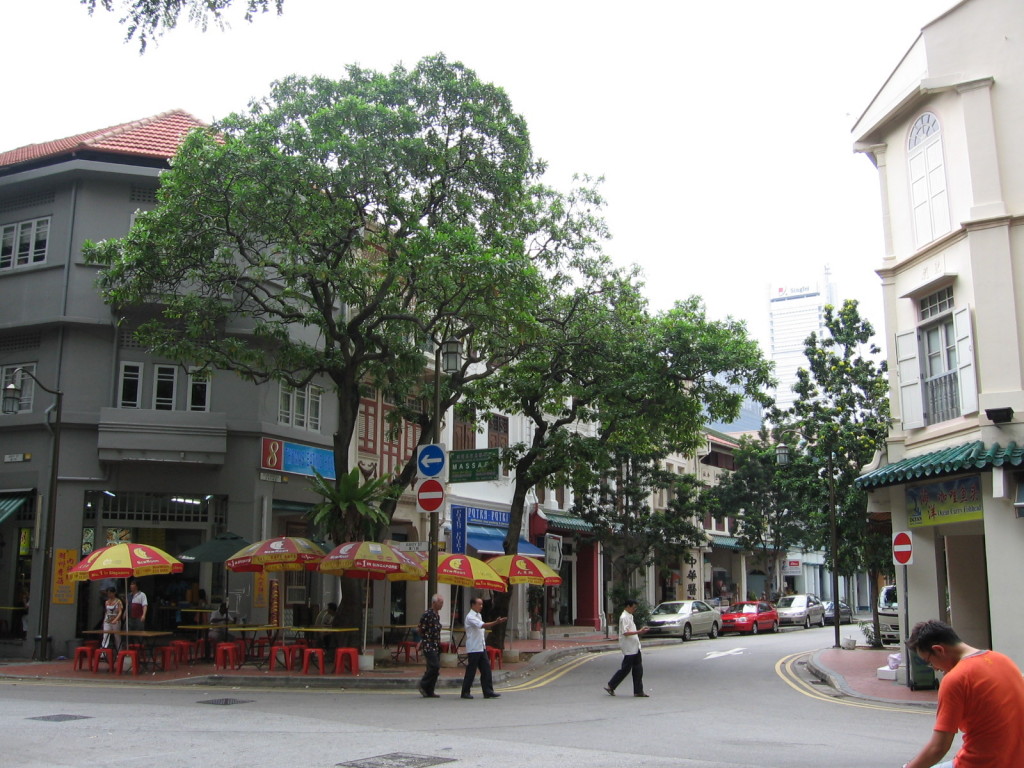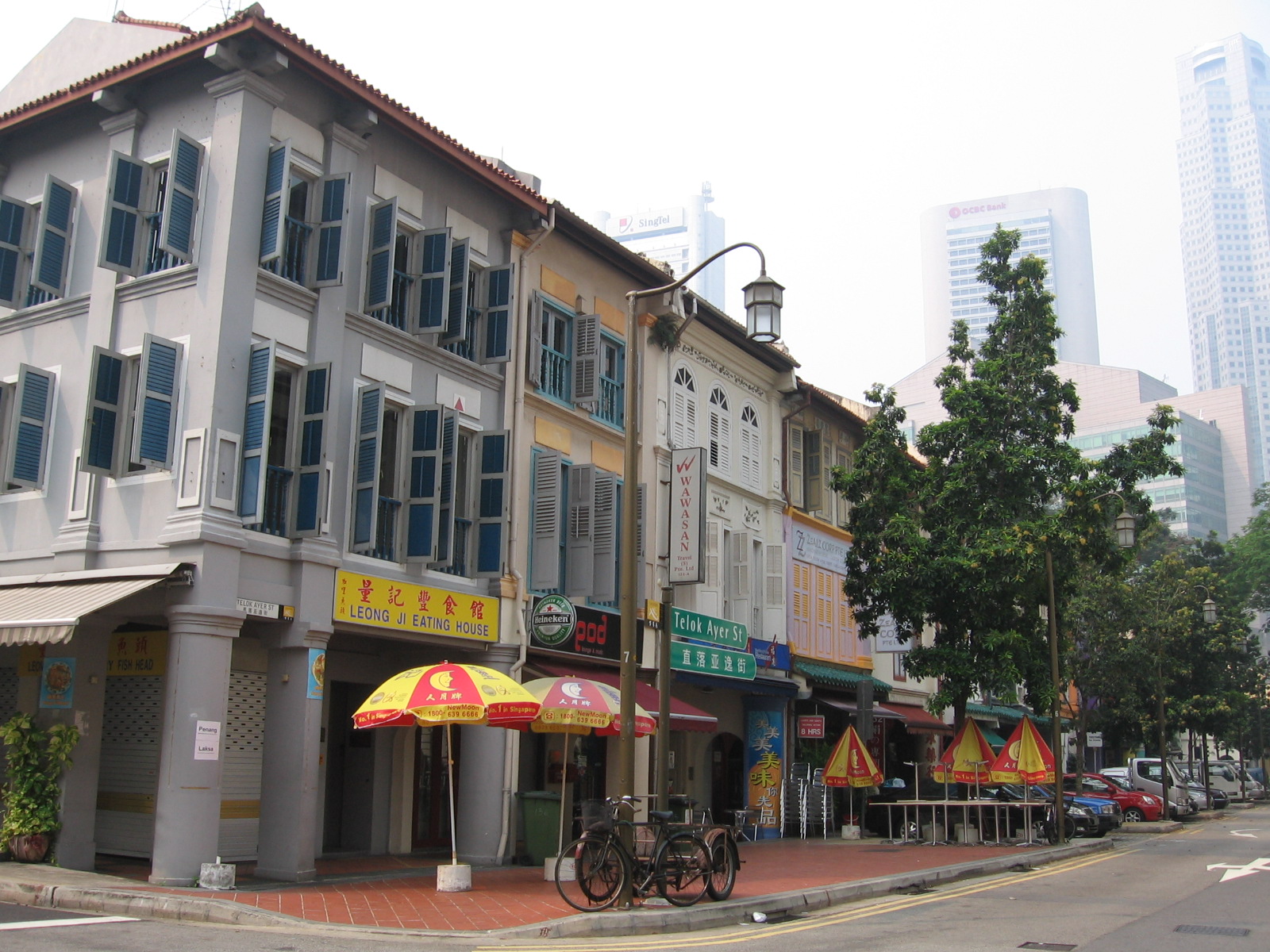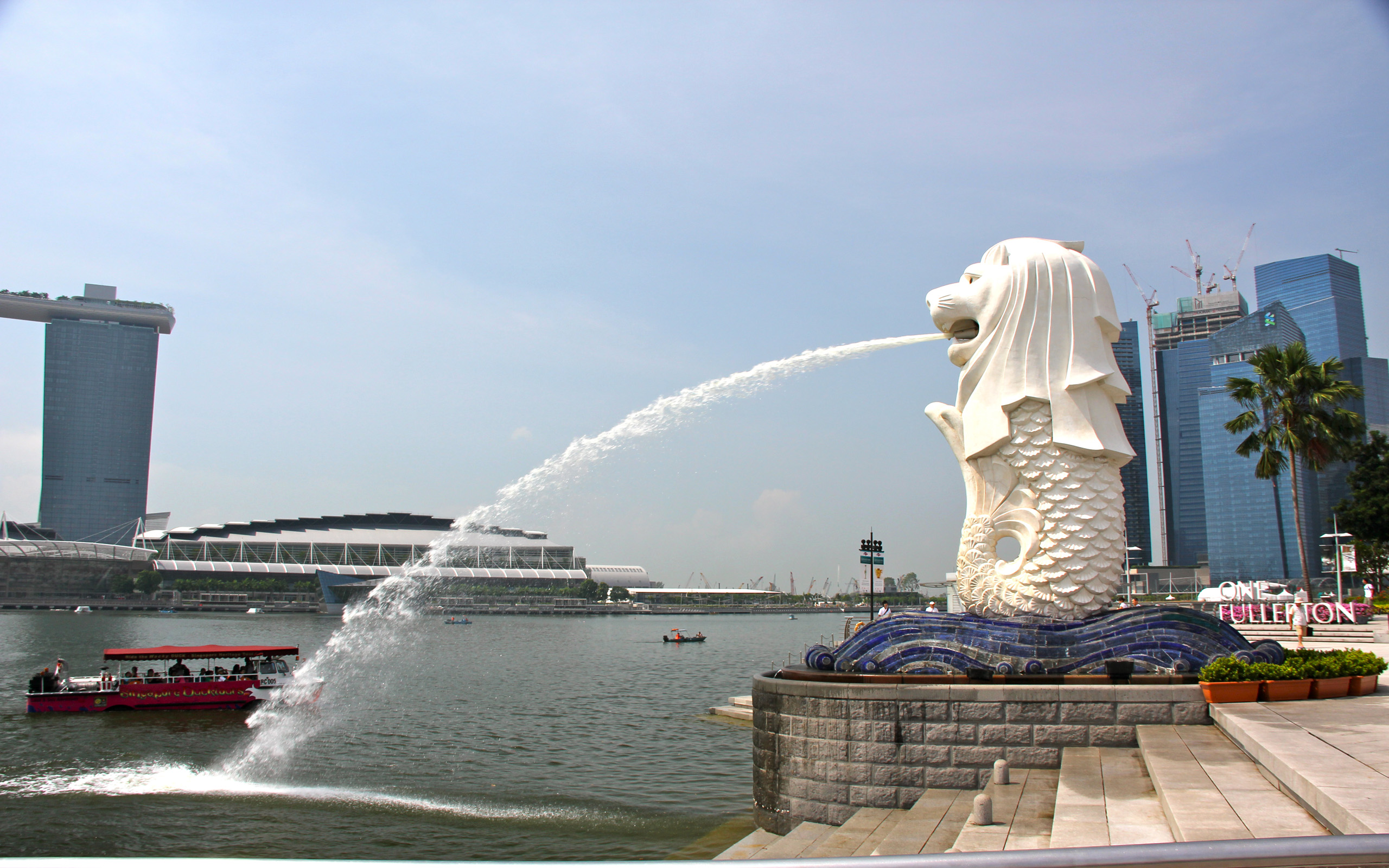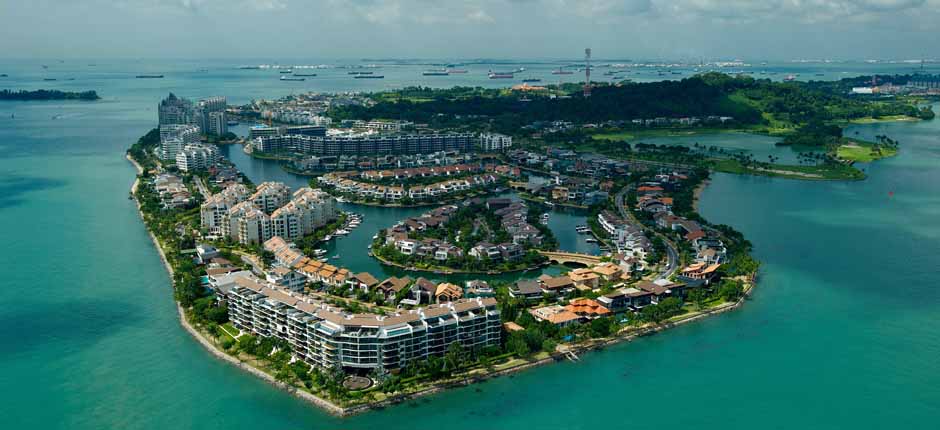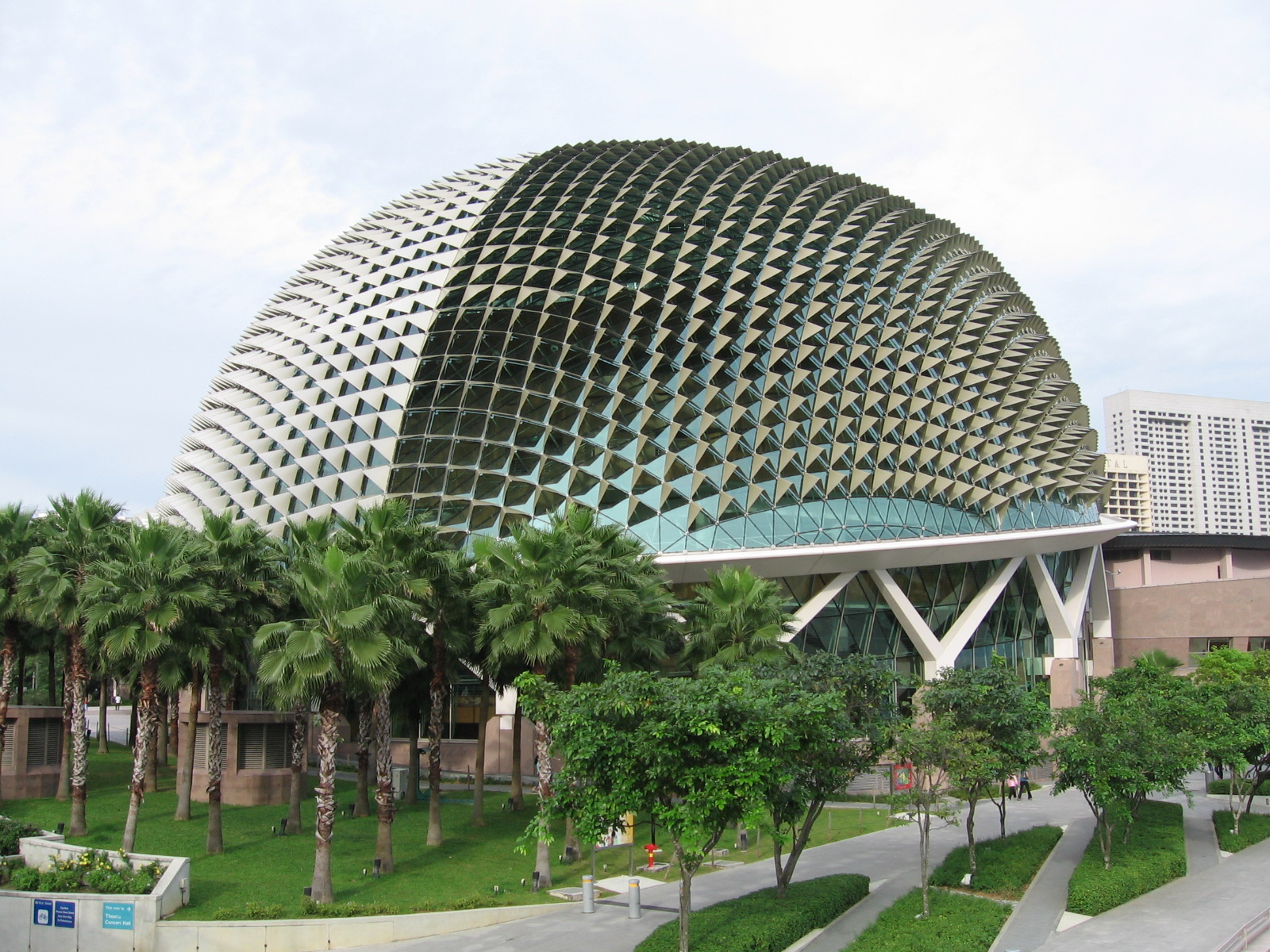Singapore /Singapore /Singapore
Sight Address : Telok Ayer Street,Singapore, Singapore (Downtown Core).Edit
Detail InformationEdit
Telok Ayer is a historic district located in Singapore’s Chinatown within the Central Business District, straddling the Outram Planning Area and the Downtown Core under the Urban Redevelopment Authority’s urban planning zones.Telok Ayer and its namesake road, Telok Ayer Street, was named after Telok Ayer Bay, located at the foot of Mount Wallich. The Malay name refers to “bay water” because Telok Ayer Street was the coastal road along the bay.Telok Ayer Street appears in George Drumgoole Coleman’s 1836 Map of Singapore as Teluk Ayer Street. The Chinese name for Telok Ayer Street refers to the Chinese temple on this street — da bo gong miao jie.
Telok Ayer Street was also known colloquially under two names. The area nearer Merchant Street was called Guan Soon Street because there was a firm located here called Chop Guan Soon that brought in Indian labourers. Guan Sun is also the name of one of the five divisions of Hoklos (Hokkien) which took part in the Chingay procession once every three years.The other colloquial name for Telok Ayer Street is called the “front street” of Mah Cho Temple in Hokkien because the street is in front of the Thian Hock Keng Temple, dedicated to Goddess of the Sea, Mah Cho or Matsu.
HistoryEdit
In 1822, Telok Ayer was the primary area set aside by Sir Stamford Raffles for the Chinese community. As the main landing site for Chinese immigrants, Telok Ayer Street become one of the first streets in Chinatown and formed the backbone of development of the Chinese immigrant community in early Singapore. Thus, the Telok Ayer district was the original focal point of settlement in Chinatown.Until the late nineteenth century, Telok Ayer Street was the main commercial and residential thoroughfare in Singapore. As immigration from China increased, so did the adverse qualities usually associated with a highly concentrated population. Between the 1850s and the 1870s, the road was the centre of the notorious Chinese slave trade. By the turn of the century, the area had become polluted and congested, and these factors, as well as the increasing afflucence of some of the merchants, were possibly the main reasons which drove them out of town to look for a more salubrious environment.Temples and mosques are plentiful in this area as they were built by Chinese and Muslim immigrants to show their gratitude for safe passage. The numerous religious and clan buildings on Telok Ayer Street testify to their importance in the past. These buildings include:
Thian Hock Keng Temple (1820s), the oldest Hokkien temple in Singapore, dedicated to Matsu, Goddess of the Sea, Queen of Heaven and Patron of Sailors,
Fuk Tak Chi Temple (1824), built jointly by the Hakkas and Cantonese, colloquially known as the mah cau toh peh kong, now restored as a museum,
Hock Teck Chi Temple (1824–1869),
Ying Fo Fui Kun Hakka Association Hall (1882),
Ying Fo Fui Kun Temple (1823), the earliest building on the street built by the Hakkas,
Nagore Durgha Shrine (1828–1830),
Al-Abrar Mosque (circa 1827), and
Telok Ayer Chinese Methodist Church (1924).In the past before land reclamation, boats used to moor in Telok Ayer Bay waiting to get fresh water, carried by bullock carts, from a well at Ann Siang Hill.The street also was the founding site of one of Singapore’s oldest schools, Gan Eng Seng School, which was started in 1885 at 106 Telok Ayer Street as the Anglo-Chinese Free School. The historical site marker of the school is nearby at the junction of Telok Ayer and Cecil Streets.Today, the whole bay area in front of Telok Ayer Street lies on reclaimed land. In 1863, a group of local businessmen including Whampoa, applied to the Governor Orfeur Cavenagh for permission to build, at their own expense, a pier and a seawall to reclaim land to build warehouses. However, the request was not acceded, and the Hokkien temple of Thian Hock Keng was to remain fronting the sea until 1879.Plans for reclamation were again put forward in 1865 and reclamation work carried out between 1878 and 1885. The government levelled the hills along the coast, including Mount Wallich, in order to reclaim land from Telok Ayer Bay. Robinson Road and Anson Road were subsequently built. The existing marshland was drained, the nutmeg plantations made way for maritime buildings and Thian Hock Keng Temple found itself five blocks away from the sea.
Must SeeEdit
Popular
Visiting TimeEdit
N.A.
Closed OnEdit
N.A.
Best Season to VisitEdit
June to July and November to December.
Best Time To VisitEdit
N.A.
Time Required for SightseeingEdit
N.A.
Ticket Required : No Edit
Individual National Adult : N.A.
Kids : N.A.
Individual Foreigner Adult : N.A.
Kids : N.A.
Still Photo Camera : N.A.
Video Camera : N.A.
Guide Required : No Edit
Approximate cost: N.A.
Dress Code (If Any) : No Edit
Dress Require: N.A.
Restaurants NearbyAdd / Edit
How to ReachEdit
Taxi : Taxis are generally very hard to get during peak hours (Mon-Fri 7:00am – 9:30am and Mon-Sat 5:00pm – 8:00pm) and on rainy days. If you are at a hotel, have conceirge call you a taxi. If you are out about town and have access to a cell phone- calling for a taxi will cut your wait time by 20 to 30 minutes. All taxis are fitted with meters; all are air conditioned; the majority of the taxis are 5-seaters; about 90% of taxis have radiophones; call booking is done via GPS or digital voice dispatch. All passengers must fasten their seat belts by law.
For taxi Booking fee is SGD $2.3. Minimum fare for taxi is SGD $3 for first 1Km. Fare above minimum fare until 10Km is SGD $0.55 per Km. Fare above 10Km is charge SGD $0.628 per Km. Taxi Waiting charges per hour is SGD $17.6. Peak Hours charges is diffrent.
Bus : Public buses run daily from 5.30am to midnight. Extended night services cost slightly more (a flat rate ranging from $1.50-$3.00). Otherwise, most fares depend on distance travelled and range from 67 cents to $1.58 for air-conditioned comfort (almost all public buses in Singapore have air-conditioning today). There are also “feeder” bus services that charge a flat rate of 67 cents. Each bus should not take more than 15 to 20 minutes to arrive at the bus stop.
Train : Singapore MRT system is very well connected to different parts of Singapore and very clean! If you have the time and plan to explore around little Sunny island, get the the Singapore Tourist Pass!
It runs 6am-12mn, fares start at S$1 (70cents in EZ link). Tickets can be purchased in all MRT stations. You just have to insert your money through the ticket machine. Rush hour’s usually 7am-9am, 11am-2pm and 4pm-7pm.
Air : Changi Airport is the country’s main airport. From the airport there are a number of ways to get into the city:
Taxi is easiest – simply follow the signs after clearing customs. Meters are always used in Singapore and prices are reasonable. A trip to the city during the day will be between $20-$30 including $3-5 airport surcharge. An additional 50% surcharge applies between midnight and 06:00.
Limousines charge a flat $50 to anywhere in the city and are a pretty good deal after midnight, as you can skip the queue and avoid the surcharge. The same pricing applies to chartering van-sized MaxiCabs, which are good for large families or if you have lots of baggage.
Shuttle – Shared six-seater MaxiCab shuttle service to designated areas/hotels costs $7 and can be booked in advance or in the arrivals hall. 6AM-2AM, every 15-30 min.
Subway – MRT trains run from a station between T2 and T3, but you’ll need to change trains at Tanah Merah to a city-bound train: just exit through the left hand side door and cross the platform. The 30 min ride to City Hall station costs $1.90 plus a refundable $1 deposit, and trains run 05:31-23:18.
Bus – Bus terminals can be found in the basements of T1, T2 and T3. 06:00-23:59 only. Fares are less than $2.00, exact fare required (no change given) if you pay cash.
Others : N.A.
Things to CarryEdit
Safety / WarningEdit
- Please be advised that all bags and personal items are subject to inspection.
HelplineEdit
- Police: 999
- Emergencies/Ambulance/Fire Brigade: 999
- Police Hotline: 1800 353 0000
- Non-emergency ambulance: 1777
- Flight Information (24-hours): 1800-542 4422
- Tourism Information (24-hours): 1800-736 2000
